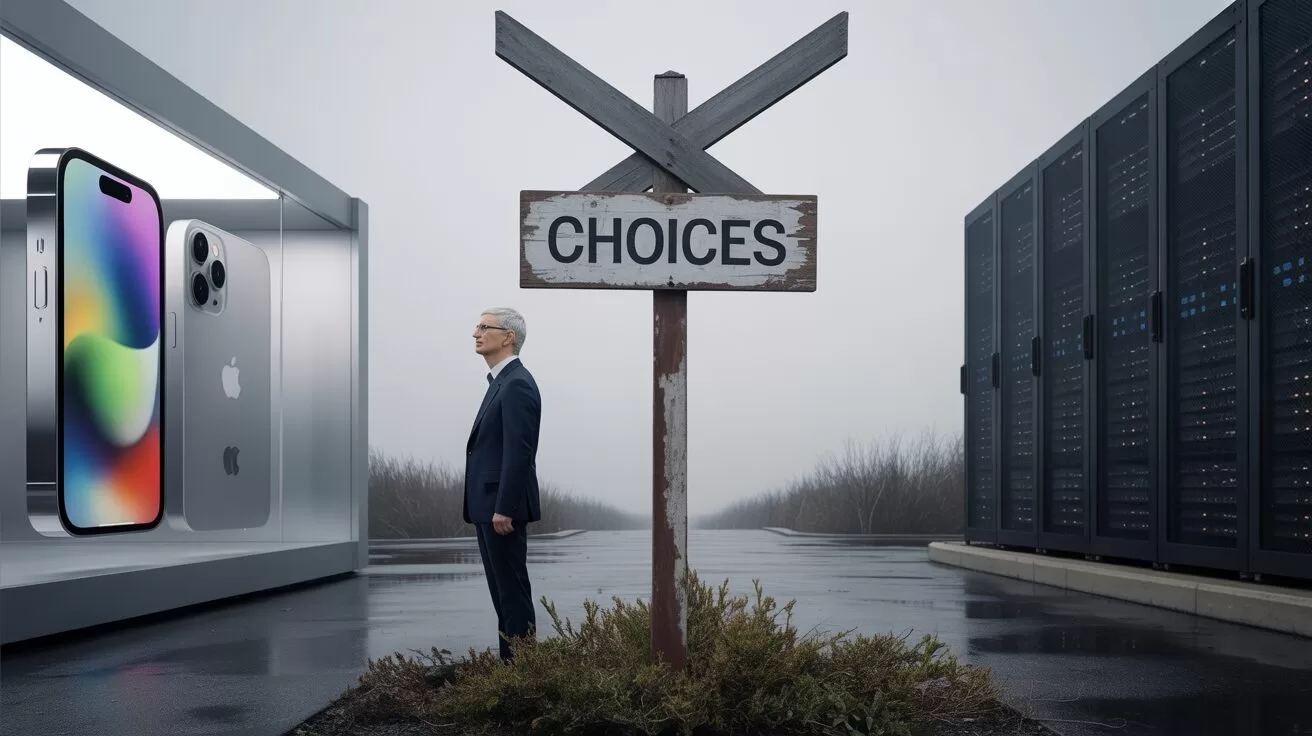News
New York Times Encourages Staff to Use AI for Headlines and Summaries
The New York Times embraces generative AI for headlines and summaries, sparking staff worries and a looming legal clash over AI’s role in modern journalism.
Published
3 months agoon
By
AIinAsia
TL;DR – What You Need to Know in 30 Seconds
- The New York Times has rolled out a suite of generative AI tools for staff, ranging from code assistance to headline generation.
- These tools include models from Google, GitHub, Amazon, and a bespoke summariser called Echo (Semafor, 2024).
- Employees are allowed to use AI to create social media posts, quizzes, and search-friendly headlines — but not to draft or revise full articles.
- Some staffers fear a decline in creativity or accuracy, as AI chatbots can be known to produce flawed or misleading results.
NYT Generative AI Headlines? Whatever Next!
When you hear the phrase “paper of record,” you probably think of tenacious reporters piecing together complex investigations, all with pen, paper, and a dash of old-school grit. So you might be surprised to learn that The New York Times — that very “paper of record” — is now fully embracing generative AI to help craft headlines, social media posts, newsletters, quizzes, and more. That’s right, folks: the Grey Lady is stepping into the brave new world of artificial intelligence, and it’s causing quite a stir in the journalism world.
In early announcements, the paper’s staff was informed that they’d have access to a suite of brand-new AI tools, including generative models from Google, GitHub, and Amazon, as well as a bespoke summarisation tool called Echo (Semafor, 2024). This technology, currently in beta, is intended to produce concise article summaries for newsletters — or, as the company guidelines put it, create “tighter” articles.
Generative AI can assist our journalists in uncovering the truth and helping more people understand the world,” the newspaper’s new editorial guidelines read.
But behind these cheery official statements, some staffers are feeling cautious. What does it mean for a prestigious publication — especially one that’s been quite vocal about its legal qualms with OpenAI and Microsoft — to allow AI to play such a central role? Let’s take a closer look at how we got here, why it’s happening, and why some employees are less than thrilled.
The Backstory About NYT and Gen AI
For some time now, The New York Times has been dipping its toes into the AI waters. In mid-2023, leaked data suggested the paper had already trialled AI-driven headline generation (Semafor, 2024). If you’d heard rumours about “AI experiments behind the scenes,” they weren’t just the stuff of newsroom gossip.
Fast-forward to May 2024, and an official internal announcement confirmed an initiative:
A small internal pilot group of journalists, designers, and machine-learning experts [was] charged with leveraging generative artificial intelligence in the newsroom.
This hush-hush pilot team has since expanded its scope, culminating in the introduction of these new generative AI tools for a wider swath of NYT staff.
The guidelines for using these tools are relatively straightforward: yes, the staff can use them for summarising articles in a breezy, conversational tone, writing short promotional blurbs for social media, or refining search headlines. But they’re also not allowed to use AI for in-depth article writing or for editing copyrighted materials that aren’t owned by the Times. And definitely no skipping paywalls with an AI’s help, thank you very much.
The Irony of the AI Embrace
If you’re scratching your head thinking, “Hang on, didn’t The New York Times literally sue OpenAI and Microsoft for copyright infringement?” then you’re not alone. Indeed, the very same lawsuit continues to chug along, with Microsoft scoffing at the notion that its technology misuses the Times’ intellectual property. And yet, some forms of Microsoft’s AI, specifically those outside ChatGPT’s standard interface, are now available to staff — albeit only if their legal department green-lights it.
For many readers (and likely some staff), it feels like a 180-degree pivot. On the one hand, there’s a lawsuit expressing serious concerns about how large language models might misappropriate or redistribute copyrighted material. On the other, there’s a warm invitation for in-house staff to hop on these AI platforms in pursuit of more engaging headlines and social posts.
Whether you see this as contradictory or simply pragmatic likely depends on how much you trust these AI tools to respect intellectual property boundaries. The Times’ updated editorial guidelines do specify caution around using AI for copyrighted materials — but some cynics might suggest that’s easier said than done.
When Journalists Meet Machines
One of the main selling points for these AI tools is their capacity to speed up mundane tasks. Writing multiple versions of a search-friendly headline or summarising a 2,000-word investigation in a few lines can be quite time-consuming. The Times is effectively saying: “If a machine can handle this grunt work, why not let it?”
But not everyone is on board, and it’s not just about potential copyright snafus. Staffers told Semafor that some colleagues worry about a creeping laziness or lack of creativity if these AI summarisation tools become the default. After all, there’s a risk that if AI churns out the same style of copy over and over again, the paper’s famed flair for nuance might get watered down (Semafor, 2024).
Another fear is the dreaded “hallucination” effect. Generative AI can sometimes spit out misinformation, introducing random facts or statistics that aren’t actually in the original text. If a journalist or editor doesn’t thoroughly check the AI’s suggestions, well, that’s how mistakes sneak into print.
Counting the Cost
The commercial angle can’t be ignored. Newsrooms worldwide are experimenting with AI, not just for creative tasks but also for cost-saving measures. As budgets get tighter, the ability to streamline certain workflows might look appealing to management. If AI can generate multiple variations of headlines, social copy, or quiz questions in seconds, why pay staffers to do it the old-fashioned way?
Yet, there’s a balance to be struck. The New York Times has a reputation for thoroughly fact-checked, carefully written journalism. Losing that sense of craftsmanship in favour of AI-driven expediency could risk alienating loyal readers who turn to the Times for nuance and reliability.
The Road Ahead
It’s far too soon to say if The New York Times’ experiment with AI will usher in a golden era of streamlined, futuristic journalism — or if it’ll merely open Pandora’s box of inaccuracies and diminishing creative standards. Given the paper’s clout, its decisions could well influence how other major publications deploy AI. After all, if the storied Grey Lady is on board, might smaller outlets follow suit?
For the rest of us, this pivot sparks some larger, existential questions about the future of journalism. Will readers and journalists learn to spot AI-crafted text in the wild? Could AI blur the line between sponsored content and editorial copy even further? And as lawsuits about AI training data keep popping up, will a new set of norms and regulations shape how newsrooms harness these technologies?
So, Where Do We Go From Here?
The Times’ decision might feel like a jarring turn for some of its staff and longtime readers. Yet, it reflects broader trends in our increasingly AI-driven world. Regardless of where you stand, it’s a reminder that journalism — from how stories are researched and written, to how headlines are crafted and shared — is in a dynamic period of change.
Generative AI can assist our journalists in uncovering the truth and helping more people understand the world.
Time will tell whether that promise leads to clearer insights or a murkier reality for the paper’s readers. Meanwhile, in a profession built on judgement calls and critical thinking, the introduction of advanced AI tools raises a timely question: How much of the journalism we trust will soon be shaped by lines of code rather than human ingenuity?
What does it mean for the future of news when even the most trusted institutions start to rely on algorithms for the finer details — and how long will it be before “the finer details” become everything?
You might also like:
- The Future of Journalism and Ethical Dilemmas
- AI in the News: Opportunity or Threat?
- Read the full NYT Gen AI policy here
Author
Discover more from AIinASIA
Subscribe to get the latest posts sent to your email.
You may like
-


The Three AI Markets Shaping Asia’s Future
-


Adobe Jumps into AI Video: Exploring Firefly’s New Video Generator
-


How Singtel Used AI to Bring Generations Together for Singapore’s SG60
-


Voice From the Grave: Netflix’s AI Clone of Murdered Influencer Sparks Outrage
-


How Will AI Skills Impact Your Career and Salary in 2025?
-


Beginner’s Guide to Using Sora AI Video
News
If AI Kills the Open Web, What’s Next?
Exploring how AI is transforming the open web, the rise of agentic AI, and emerging monetisation models like microtransactions and stablecoins.
Published
3 days agoon
May 28, 2025By
AIinAsia
The web is shifting from human-readable pages to machine-mediated experiences with AI impacting the future of the open web. What comes next may be less open—but potentially more useful.
TL;DR — What You Need To Know
- AI is reshaping web navigation: Google’s AI Overviews and similar tools provide direct answers, reducing the need to visit individual websites.
- Agentic AI is on the rise: Autonomous AI agents are beginning to perform tasks like browsing, shopping, and content creation on behalf of users.
- Monetisation models are evolving: Traditional ad-based revenue is declining, with microtransactions and stablecoins emerging as alternative monetisation methods.
- The open web faces challenges: The shift towards AI-driven interactions threatens the traditional open web model, raising concerns about content diversity and accessibility.
The Rise of Agentic AI
The traditional web, characterised by human users navigating through hyperlinks and search results, is undergoing a transformation. AI-driven tools like Google’s AI Overviews now provide synthesised answers directly on the search page, reducing the need for users to click through to individual websites.
This shift is further amplified by the emergence of agentic AI—autonomous agents capable of performing tasks such as browsing, shopping, and content creation without direct human intervention. For instance, Opera’s new AI browser, Opera Neon, can automate internet tasks using contextual awareness and AI agents.
These developments suggest a future where AI agents act as intermediaries between users and the web, fundamentally altering how information is accessed and consumed.
Monetisation in the AI Era
The traditional ad-based revenue model that supported much of the open web is under threat. As AI tools provide direct answers, traffic to individual websites declines, impacting advertising revenues.
In response, new monetisation strategies are emerging. Microtransactions facilitated by stablecoins offer a way for users to pay small amounts for content or services, enabling creators to earn revenue directly from consumers. Platforms like AiTube are integrating blockchain-based payments, allowing creators to receive earnings through stablecoins across multiple protocols.
This model not only provides a potential revenue stream for content creators but also aligns with the agentic web’s emphasis on seamless, automated interactions.
The Future of the Open Web
The open web, once a bastion of free and diverse information, is facing significant challenges. The rise of AI-driven tools and platforms threatens to centralise information access, potentially reducing the diversity of content and perspectives available to users.
However, efforts are underway to preserve the open web’s principles. Initiatives like Microsoft’s NLWeb aim to create open standards that allow AI agents to access and interact with web content in a way that maintains openness and interoperability.
The future of the web may depend on balancing the efficiency and convenience of AI-driven tools with the need to maintain a diverse and accessible information ecosystem.
What Do YOU Think?
As AI impacts the future of the open web, we must consider how to preserve the values of openness, diversity, and accessibility. How can we ensure that the web remains a space for all voices, even as AI agents become the primary means of navigation and interaction?
You may also like:
- Top 10 AI Trends Transforming Asia by 2025
- Build Your Own Agentic AI — No Coding Required
- Is AI Really Paying Off? CFOs Say ‘Not Yet’
- Or tap here to explore the free version of Claude AI.
Author
Discover more from AIinASIA
Subscribe to get the latest posts sent to your email.
News
GPT-5 Is Less About Revolution, More About Refinement
This article explores OpenAI’s development of GPT-5, focusing on improving user experience by unifying AI tools and reducing the need for manual model switching. It includes insights from VP of Research Jerry Tworek on token growth, benchmarks, and the evolving role of humans in the AI era.
Published
1 week agoon
May 22, 2025By
AIinAsia
OpenAI’s next model isn’t chasing headlines—it’s building a smoother, smarter user experience with fewer interruptions the launch of GPT-5 unified tools.
TL;DR — What You Need To Know
- GPT-5 aims to unify OpenAI’s tools, reducing the need for switching between models
- The Operator screen agent is due for an upgrade, with a push towards becoming a desktop-level assistant
- Token usage continues to rise, suggesting growing AI utility and infrastructure demand
- Benchmarks are losing their relevance, with real-world use cases taking centre stage
- OpenAI believes AI won’t replace humans but may reshape human labour roles
A more cohesive AI experience, not a leap forward
While GPT-4 dazzled with its capabilities, GPT-5 appears to be a quieter force, according to OpenAI’s VP of Research, Jerry Tworek. Speaking during a recent Reddit Q&A with the Codex team, Tworek described the new model as a unifier—not a disruptor.
“We just want to make everything our models can currently do better and with less model switching,” Tworek said. That means streamlining the experience so users aren’t constantly toggling between tools like Codex, Operator, Deep Research and memory functions.
For OpenAI, the future lies in integration over invention. Instead of introducing radically new features, GPT-5 focuses on making the existing stack work together more fluidly. This approach marks a clear departure from the hype-heavy rollouts often associated with new model versions.
Operator: from browser control to desktop companion
One of the most interesting pieces in this puzzle is Operator, OpenAI’s still-experimental screen agent. Currently capable of basic browser navigation, it’s more novelty than necessity. But that may soon change.
An update to Operator is expected “soon,” with Tworek hinting it could evolve into a “very useful tool.” The goal? A kind of AI assistant that handles your screen like a power user, automating online tasks without constantly needing user prompts.
The update is part of a broader push to make AI tools feel like one system, rather than a toolkit you have to learn to assemble. That shift could make screen agents like Operator truly indispensable—especially in Asia, where mobile-first behaviour and app fragmentation often define the user journey.
Integration efforts hit reality checks
Originally, OpenAI promised that GPT-5 would merge the GPT and “o” model series into a single omnipotent system. But as with many grand plans in AI, the reality was less elegant.
In April, CEO Sam Altman admitted the challenge: full integration proved more complex than expected. Instead, the company released o3 and o4-mini as standalone models, tailored for reasoning.
Tworek confirmed that the vision of reduced model switching is still alive—but not at the cost of model performance. Users will still see multiple models under the hood; they just might not have to choose between them manually.
Tokens and the long road ahead
If you think the token boom is a temporary blip, think again. Tworek addressed a user scenario where AI assistants might one day process 100 tokens per second continuously, reading sensors, analysing messages, and more.
That, he says, is entirely plausible. “Even if models stopped improving,” Tworek noted, “they could still deliver a lot of value just by scaling up.”
This perspective reflects a strategic bet on infrastructure. OpenAI isn’t just building smarter models; it’s betting on broader usage. Token usage becomes a proxy for economic value—and infrastructure expansion the necessary backbone.
Goodbye benchmarks, hello real work
When asked to compare GPT with rivals like Claude or Gemini, Tworek took a deliberately contrarian stance. Benchmarks, he suggested, are increasingly irrelevant.
“They don’t reflect how people actually use these systems,” he explained, noting that many scores are skewed by targeted fine-tuning.
Instead, OpenAI is doubling down on real-world tasks as the truest test of model performance. The company’s ambition? To eliminate model choice altogether. “Our goal is to resolve this decision paralysis by making the best one.”
The human at the helm
Despite AI’s growing power, Tworek offered a thoughtful reminder: some jobs will always need humans. While roles will evolve, the need for oversight won’t go away.
“In my view, there will always be work only for humans to do,” he said. The “last job,” he suggested, might be supervising the machines themselves—a vision less dystopian, more quietly optimistic.
For Asia’s fast-modernising economies, that might be a signal to double down on education, critical thinking, and human-centred design. The jobs of tomorrow may be less about doing, and more about directing.
You May Also Like:
- ChatGPT-5 Is Coming in 2024: Sam Altman
- Revolutionise Your Designs with Canva’s AI-Powered Magic Tools
- Revolutionising Critical Infrastructure: How AI is Becoming More Reliable and Transparent
- Or tap here to try the free version of ChatGPT.
Author
Discover more from AIinASIA
Subscribe to get the latest posts sent to your email.
Business
Apple’s China AI pivot puts Washington on edge
Apple’s partnership with Alibaba to deliver AI services in China has sparked concern among U.S. lawmakers and security experts, highlighting growing tensions in global technology markets.
Published
2 weeks agoon
May 21, 2025By
AIinAsia
As Apple courts Alibaba for its iPhone AI partnership in China, U.S. lawmakers see more than just a tech deal taking shape.
TL;DR — What You Need To Know
- Apple has reportedly selected Alibaba’s Qwen AI model to power its iPhone features in China
- U.S. lawmakers and security officials are alarmed over data access and strategic implications
- The deal has not been officially confirmed by Apple, but Alibaba’s chairman has acknowledged it
- China remains a critical market for Apple amid declining iPhone sales
- The partnership highlights the growing difficulty of operating across rival tech spheres
Apple Intelligence meets the Great Firewall
Apple’s strategic pivot to partner with Chinese tech giant Alibaba for delivering AI services in China has triggered intense scrutiny in Washington. The collaboration, necessitated by China’s blocking of OpenAI services, raises profound questions about data security, technological sovereignty, and the intensifying tech rivalry between the United States and China. As Apple navigates declining iPhone sales in the crucial Chinese market, this partnership underscores the increasing difficulty for multinational tech companies to operate seamlessly across divergent technological and regulatory environments.
Apple Intelligence Meets Chinese Regulations
When Apple unveiled its ambitious “Apple Intelligence” system in June, it marked the company’s most significant push into AI-enhanced services. For Western markets, Apple seamlessly integrated OpenAI’s ChatGPT as a cornerstone partner for English-language capabilities. However, this implementation strategy hit an immediate roadblock in China, where OpenAI’s services remain effectively banned under the country’s stringent digital regulations.
Faced with this market-specific challenge, Apple initiated discussions with several Chinese AI leaders to identify a compliant local partner capable of delivering comparable functionality to Chinese consumers. The shortlist reportedly included major players in China’s burgeoning AI sector:
- Baidu, known for its Ernie Bot AI system
- DeepSeek, an emerging player in foundation models
- Tencent, the social media and gaming powerhouse
- Alibaba, whose open-source Qwen model has gained significant attention
While Apple has maintained its characteristic silence regarding partnership details, recent developments strongly suggest that Alibaba’s Qwen model has emerged as the chosen solution. The arrangement was seemingly confirmed when Alibaba’s chairman made an unplanned reference to the collaboration during a public appearance.
“Apple’s decision to implement a separate AI system for the Chinese market reflects the growing reality of technological bifurcation between East and West. What we’re witnessing is the practical manifestation of competing digital sovereignty models.”
Washington’s Mounting Concerns
The revelation of Apple’s China-specific AI strategy has elicited swift and pronounced reactions from U.S. policymakers. Members of the House Select Committee on China have raised alarms about the potential implications, with some reports indicating that White House officials have directly engaged with Apple executives on the matter.
Representative Raja Krishnamoorthi of the House Intelligence Committee didn’t mince words, describing the development as “extremely disturbing.” His reaction encapsulates broader concerns about American technological advantages potentially benefiting Chinese competitors through such partnerships.
Greg Allen, Director of the Wadhwani A.I. Centre at CSIS, framed the situation in competitive terms:
“The United States is in an AI race with China, and we just don’t want American companies helping Chinese companies run faster.”
The concerns expressed by Washington officials and security experts include:
- Data Sovereignty Issues: Questions about where and how user data from AI interactions would be stored, processed, and potentially accessed
- Model Training Advantages: Concerns that the vast user interactions from Apple devices could help improve Alibaba’s foundational AI models
- National Security Implications: Worries about whether sensitive information could inadvertently flow through Chinese servers
- Regulatory Compliance: Questions about how Apple will navigate China’s content restrictions and censorship requirements
In response to these growing concerns, U.S. agencies are reportedly discussing whether to place Alibaba and other Chinese AI companies on a restricted entity list. Such a designation would formally limit collaboration between American and Chinese AI firms, potentially derailing arrangements like Apple’s reported partnership.
Commercial Necessities vs. Strategic Considerations
Apple’s motivation for pursuing a China-specific AI solution is straightforward from a business perspective. China remains one of the company’s largest and most important markets, despite recent challenges. Earlier this spring, iPhone sales in China declined by 24% year over year, highlighting the company’s vulnerability in this critical market.
Without a viable AI strategy for Chinese users, Apple risks further erosion of its market position at precisely the moment when AI features are becoming central to consumer technology choices. Chinese competitors like Huawei have already launched their own AI-enhanced smartphones, increasing pressure on Apple to respond.
“Apple faces an almost impossible balancing act. They can’t afford to offer Chinese consumers a second-class experience by omitting AI features, but implementing them through a Chinese partner creates significant political exposure in the U.S.
The situation is further complicated by China’s own regulatory environment, which requires foreign technology companies to comply with data localisation rules and content restrictions. These requirements effectively necessitate some form of local partnership for AI services.
A Blueprint for the Decoupled Future?
Whether Apple’s partnership with Alibaba proceeds as reported or undergoes modifications in response to political pressure, the episode provides a revealing glimpse into the fragmenting global technology landscape.
As digital ecosystems increasingly align with geopolitical boundaries, multinational technology firms face increasingly complex strategic decisions:
- Regionalised Technology Stacks: Companies may need to develop and maintain separate technological implementations for different markets
- Partnership Dilemmas: Collaborations beneficial in one market may create political liabilities in others
- Regulatory Navigation: Operating across divergent regulatory environments requires sophisticated compliance strategies
- Resource Allocation: Developing market-specific solutions increases costs and complexity
What we’re seeing with Apple and Alibaba may become the norm rather than the exception. The era of frictionless global technology markets is giving way to one where regional boundaries increasingly define technological ecosystems.
Looking Forward
For now, Apple Intelligence has no confirmed launch date for the Chinese market. However, with new iPhone models traditionally released in autumn, Apple faces mounting time pressure to finalise its AI strategy.
The company’s eventual approach could signal broader trends in how global technology firms navigate an increasingly bifurcated digital landscape. Will companies maintain unified global platforms with minimal adaptations, or will we see the emergence of fundamentally different technological experiences across major markets?
As this situation evolves, it highlights a critical reality for the technology sector: in an era of intensifying great power competition, even seemingly routine business decisions can quickly acquire strategic significance.
You May Also Like:
- Alibaba’s AI Ambitions: Fueling Cloud Growth and Expanding in Asia
- Apple Unleashes AI Revolution with Apple Intelligence: A Game Changer in Asia’s Tech Landscape
- Apple and Meta Explore AI Partnership
Author
Discover more from AIinASIA
Subscribe to get the latest posts sent to your email.

Upgrade Your ChatGPT Game With These 5 Prompts Tips

If AI Kills the Open Web, What’s Next?

Build Your Own Custom GPT in Under 30 Minutes – Step-by-Step Beginner’s Guide
Trending
-

 Life3 weeks ago
Life3 weeks ago7 Mind-Blowing New ChatGPT Use Cases in 2025
-

 Learning2 weeks ago
Learning2 weeks agoHow to Use the “Create an Action” Feature in Custom GPTs
-

 Business3 weeks ago
Business3 weeks agoAI Just Killed 8 Jobs… But Created 15 New Ones Paying £100k+
-

 Tools3 weeks ago
Tools3 weeks agoEdit AI Images on the Go with Gemini’s New Update
-

 Learning6 days ago
Learning6 days agoBuild Your Own Custom GPT in Under 30 Minutes – Step-by-Step Beginner’s Guide
-

 Learning2 weeks ago
Learning2 weeks agoHow to Upload Knowledge into Your Custom GPT
-

 Business1 week ago
Business1 week agoAdrian’s Arena: Stop Collecting AI Tools and Start Building a Stack
-

 Life2 weeks ago
Life2 weeks agoAdrian’s Arena: Will AI Get You Fired? 9 Mistakes That Could Cost You Everything

































